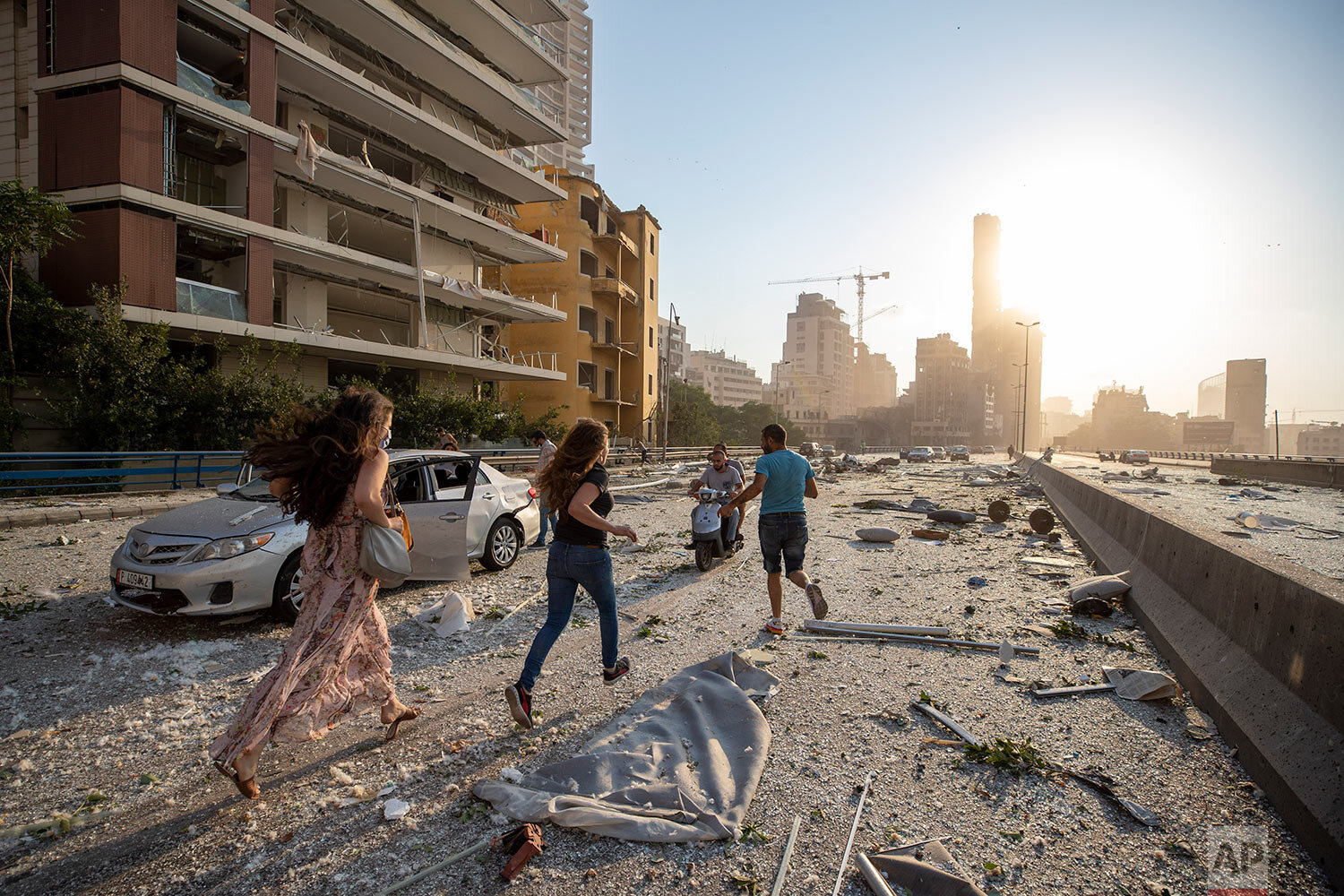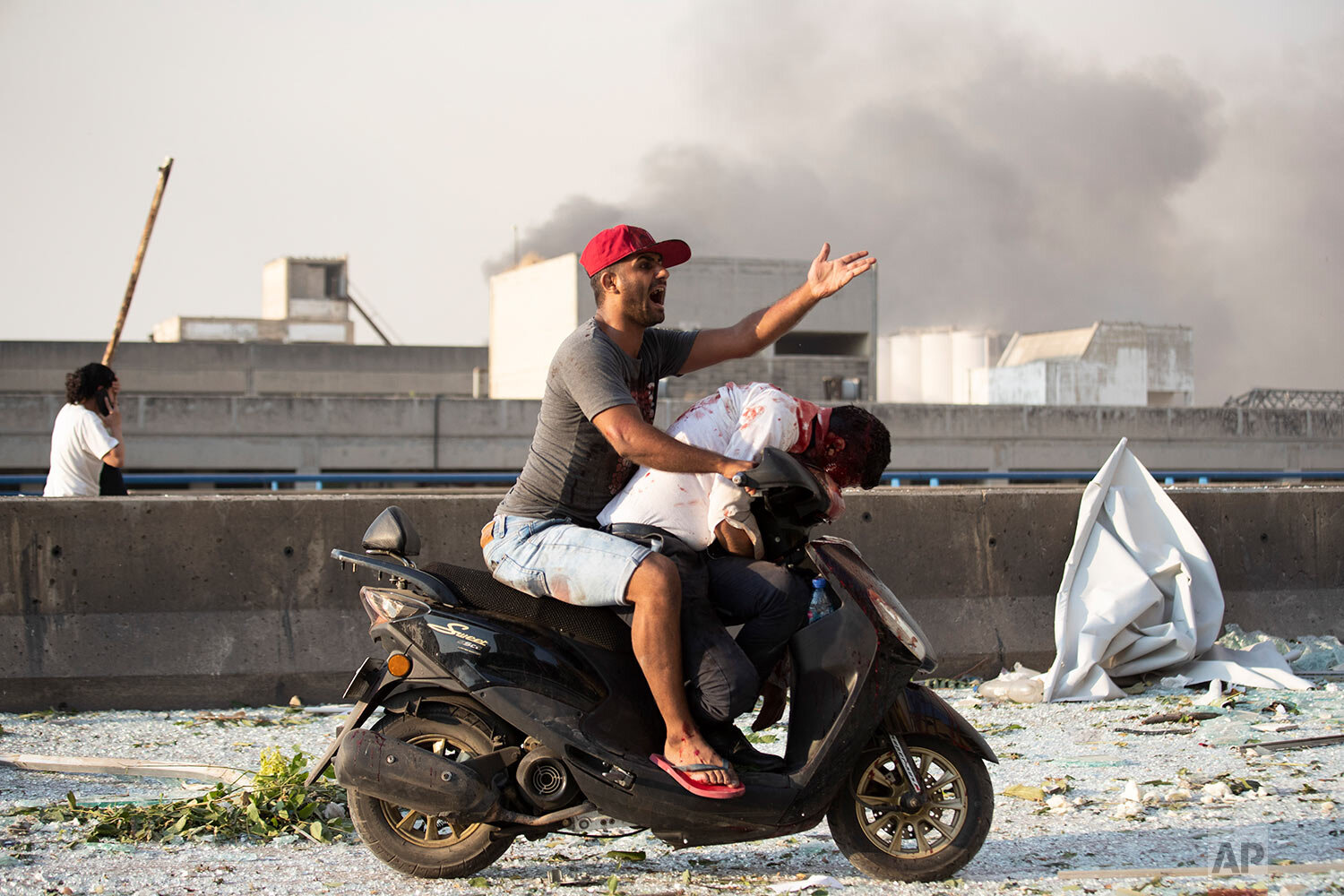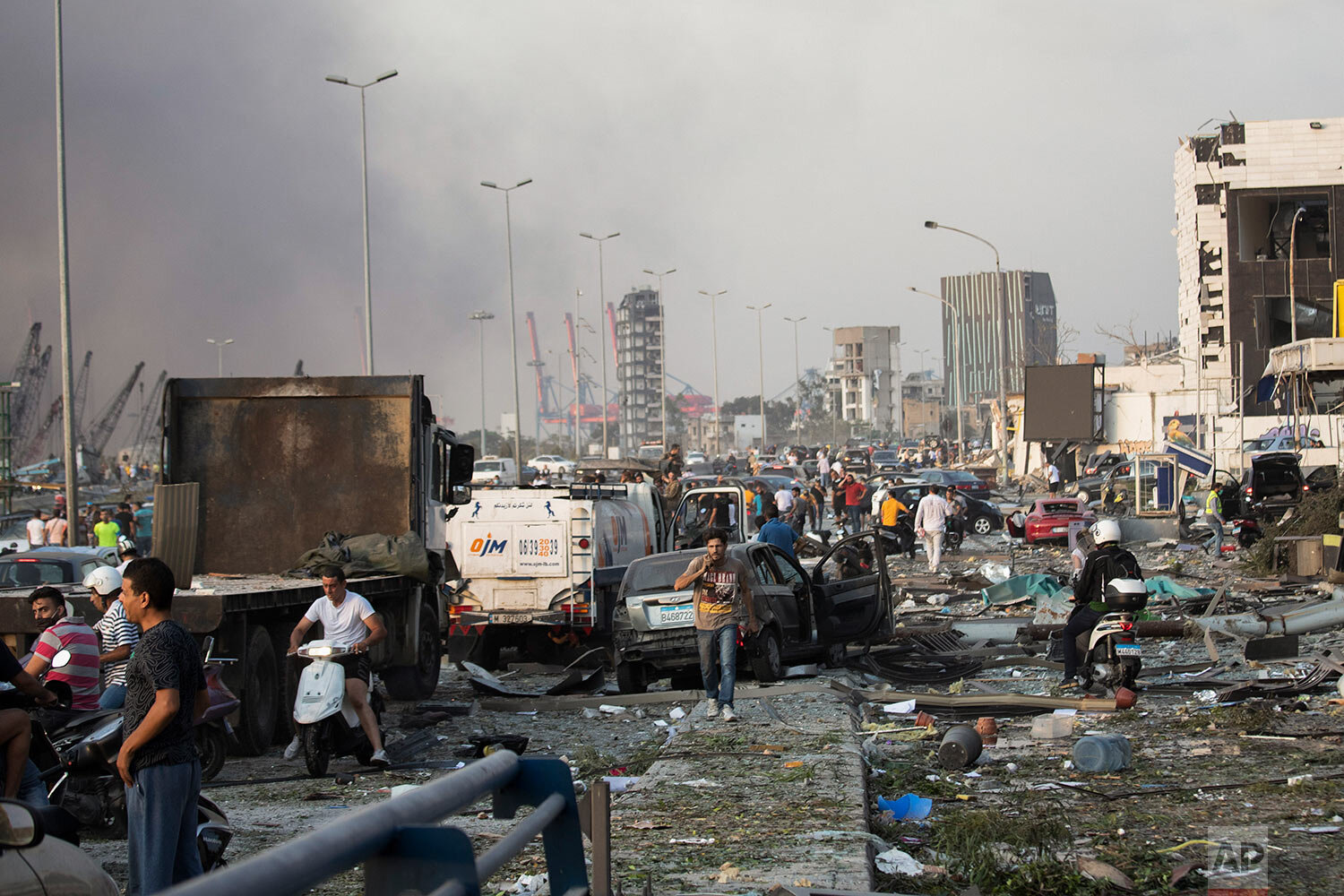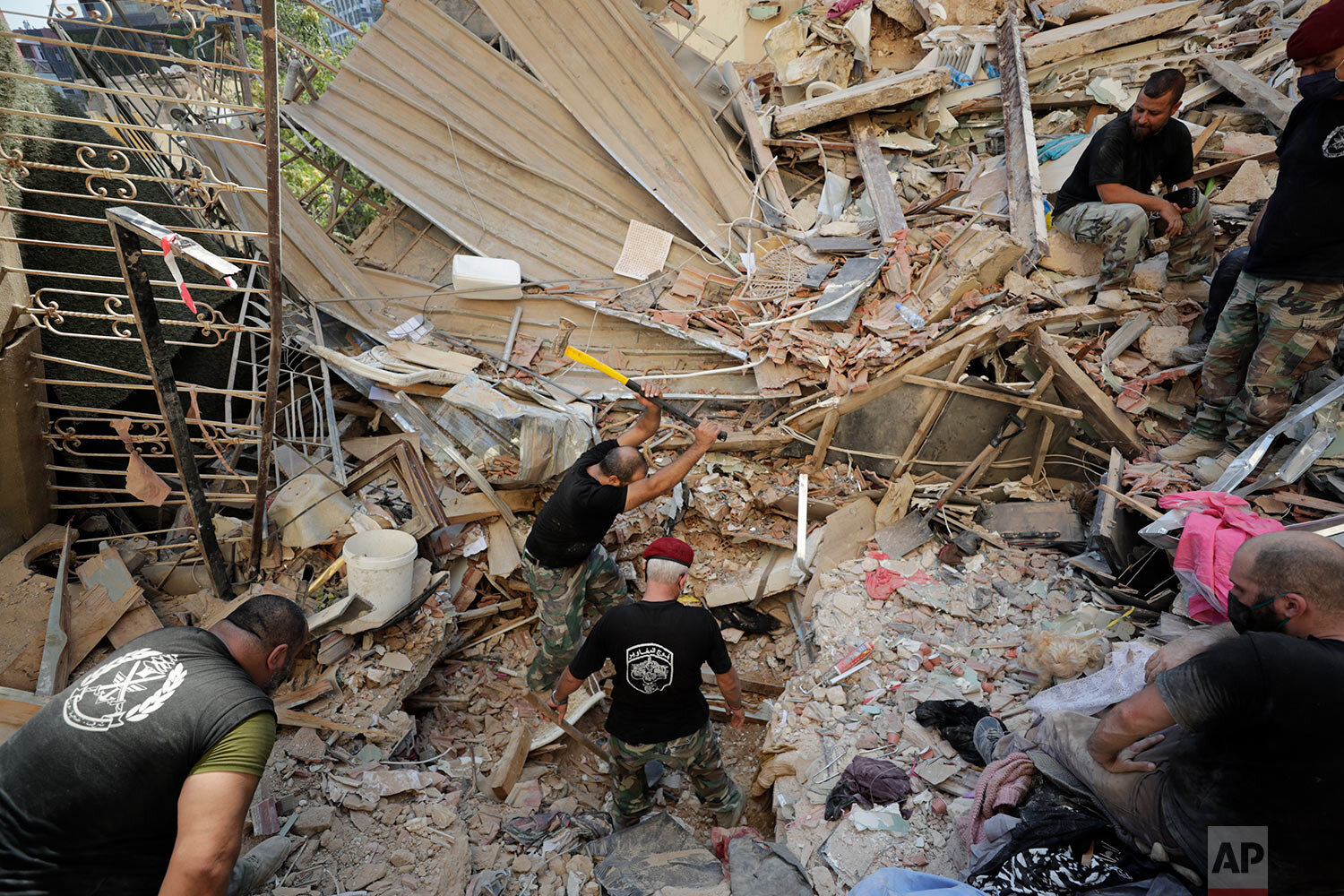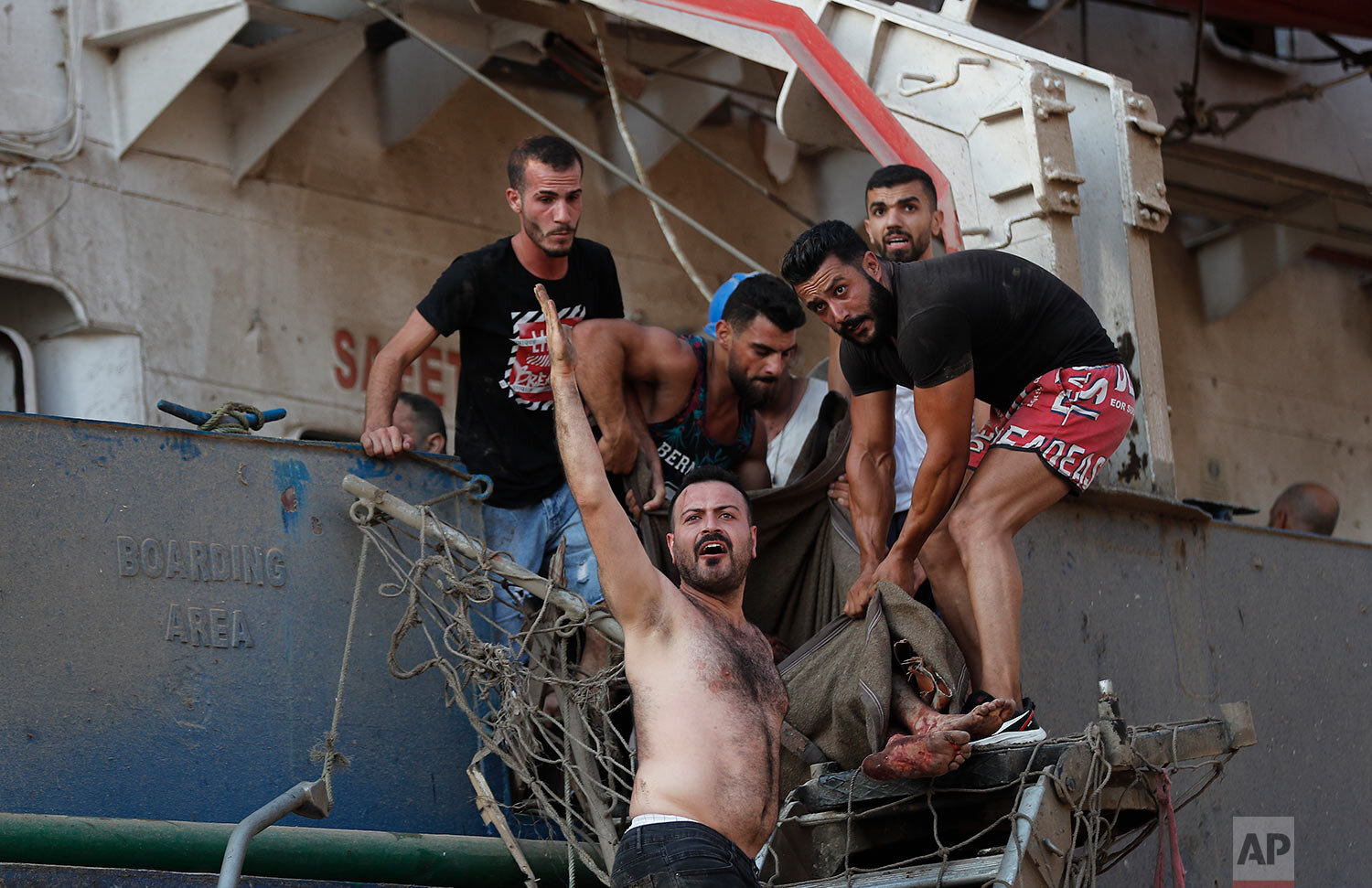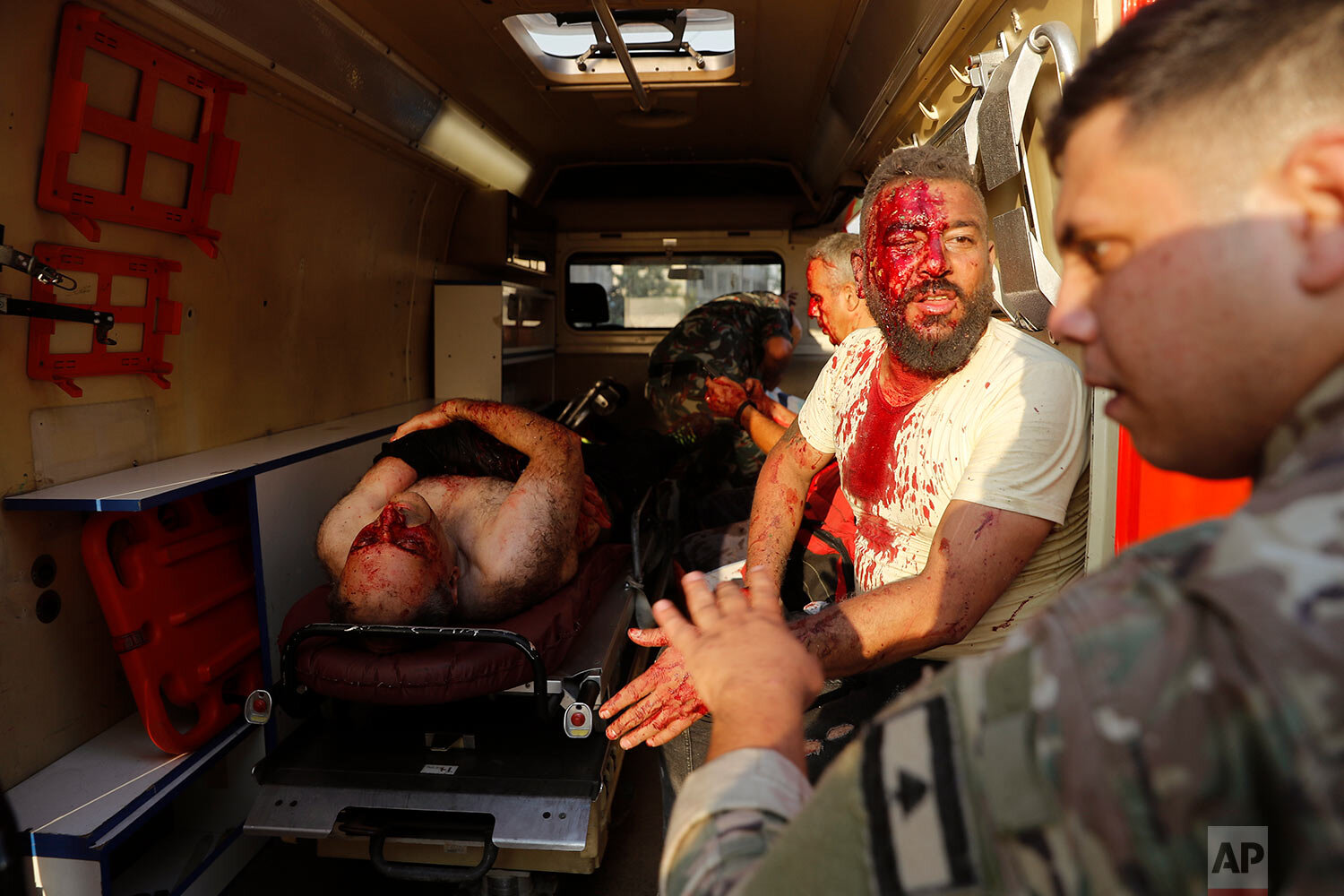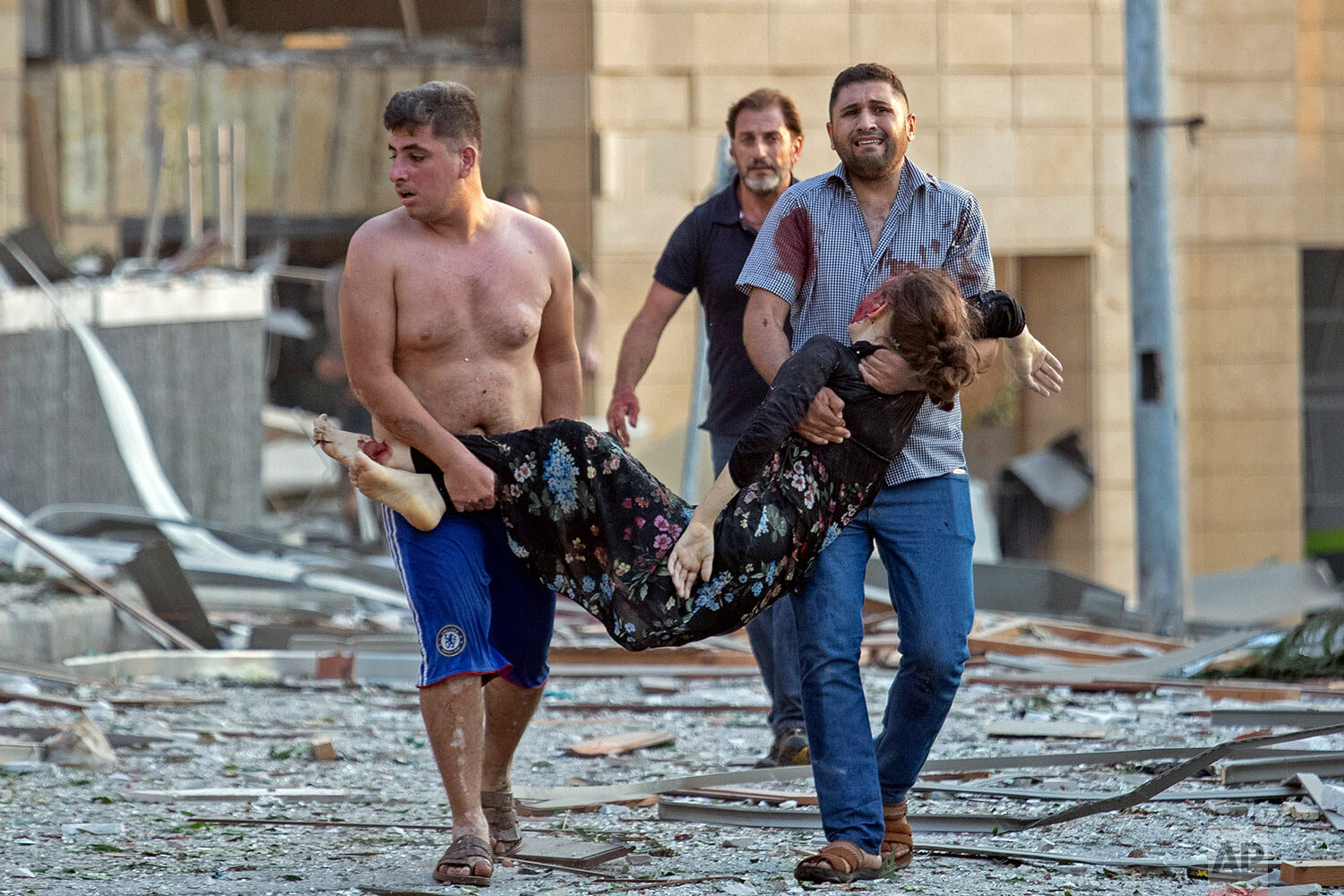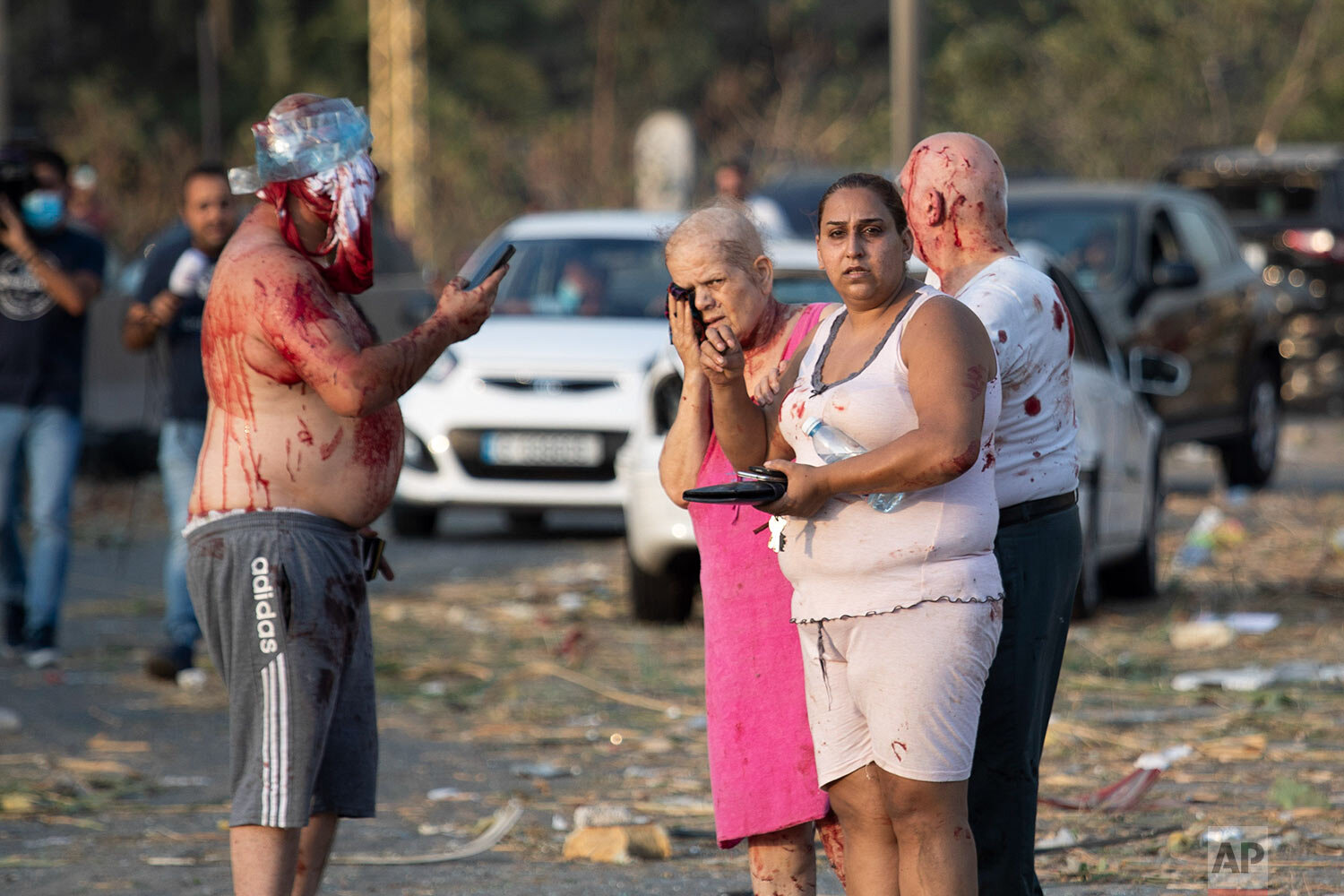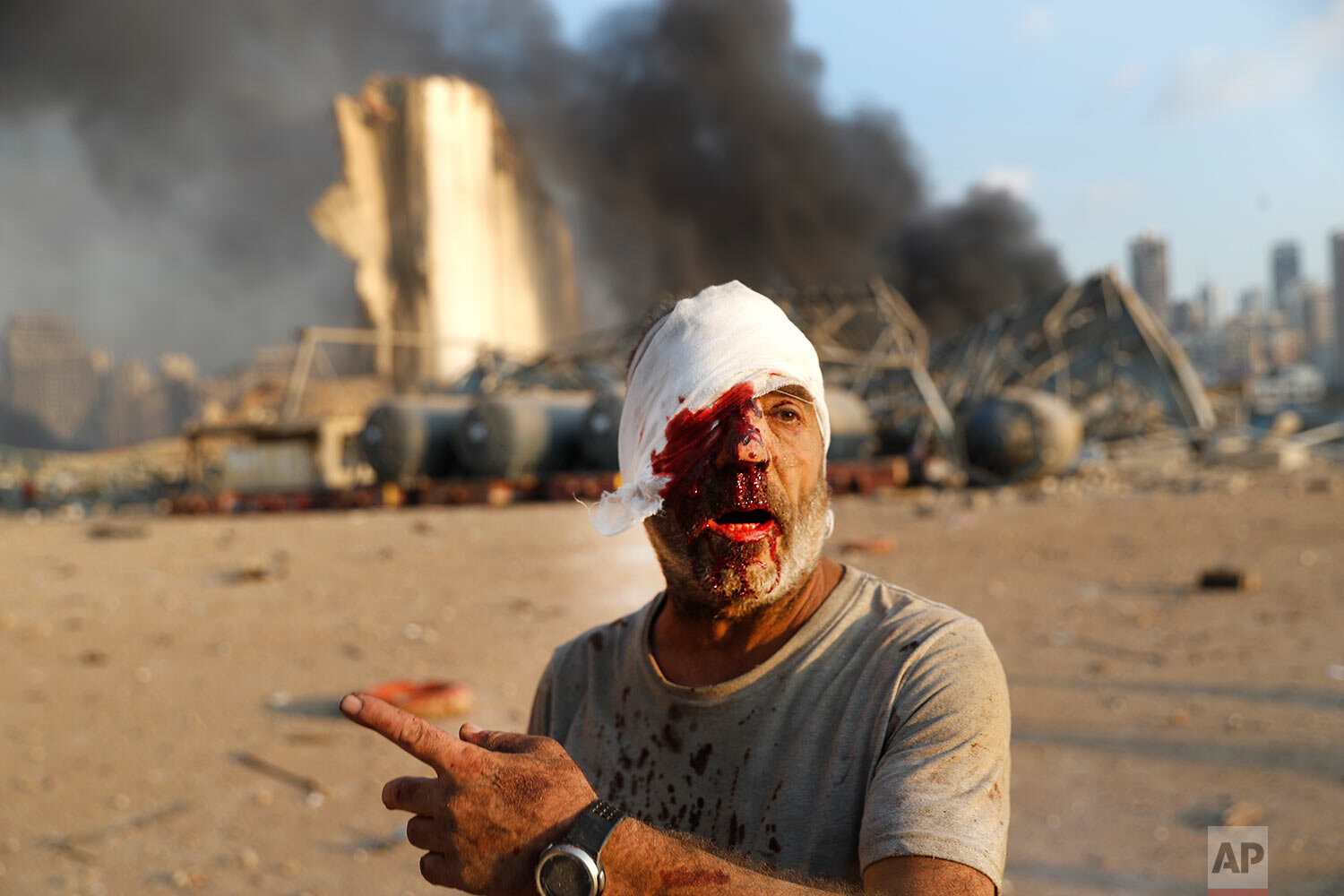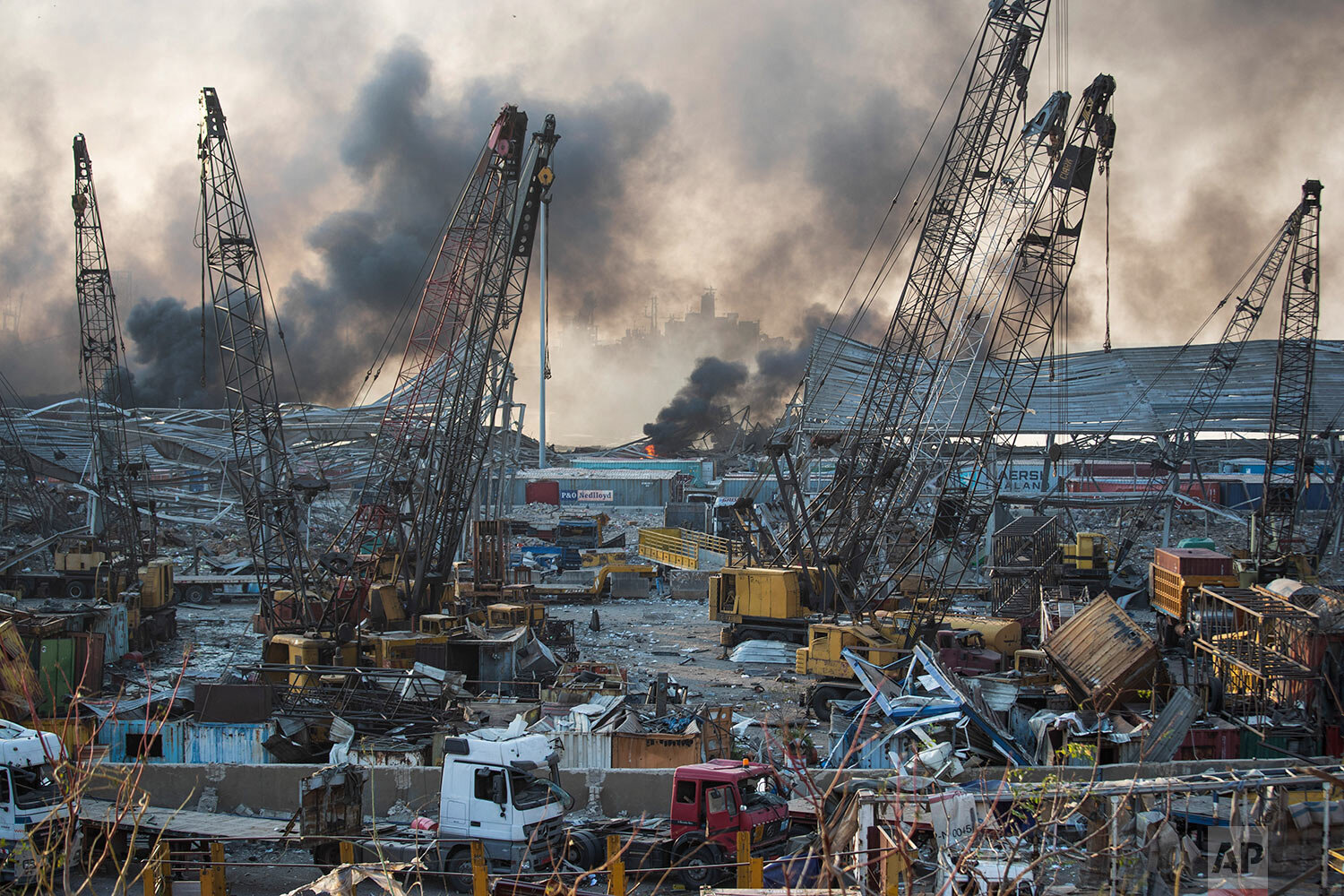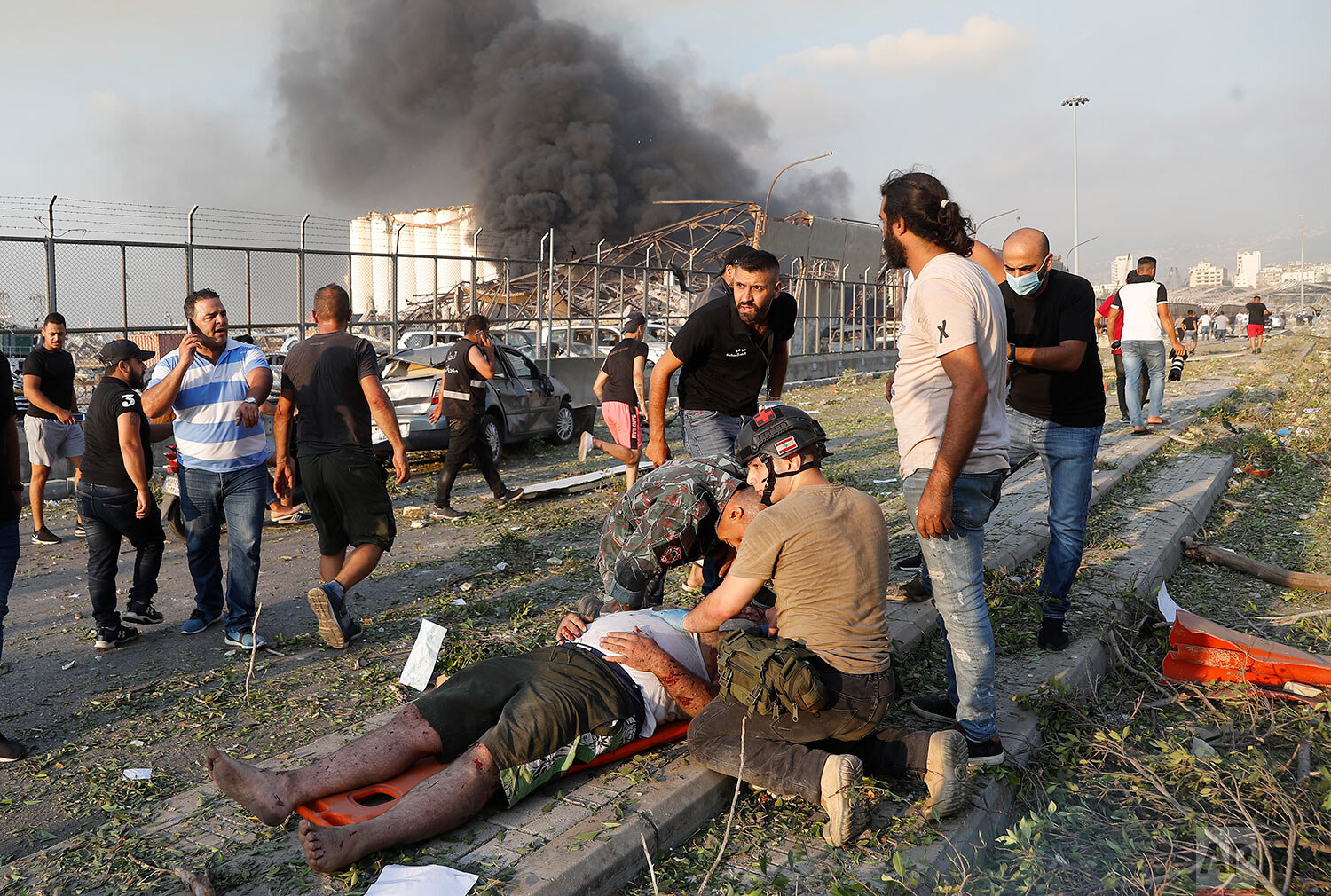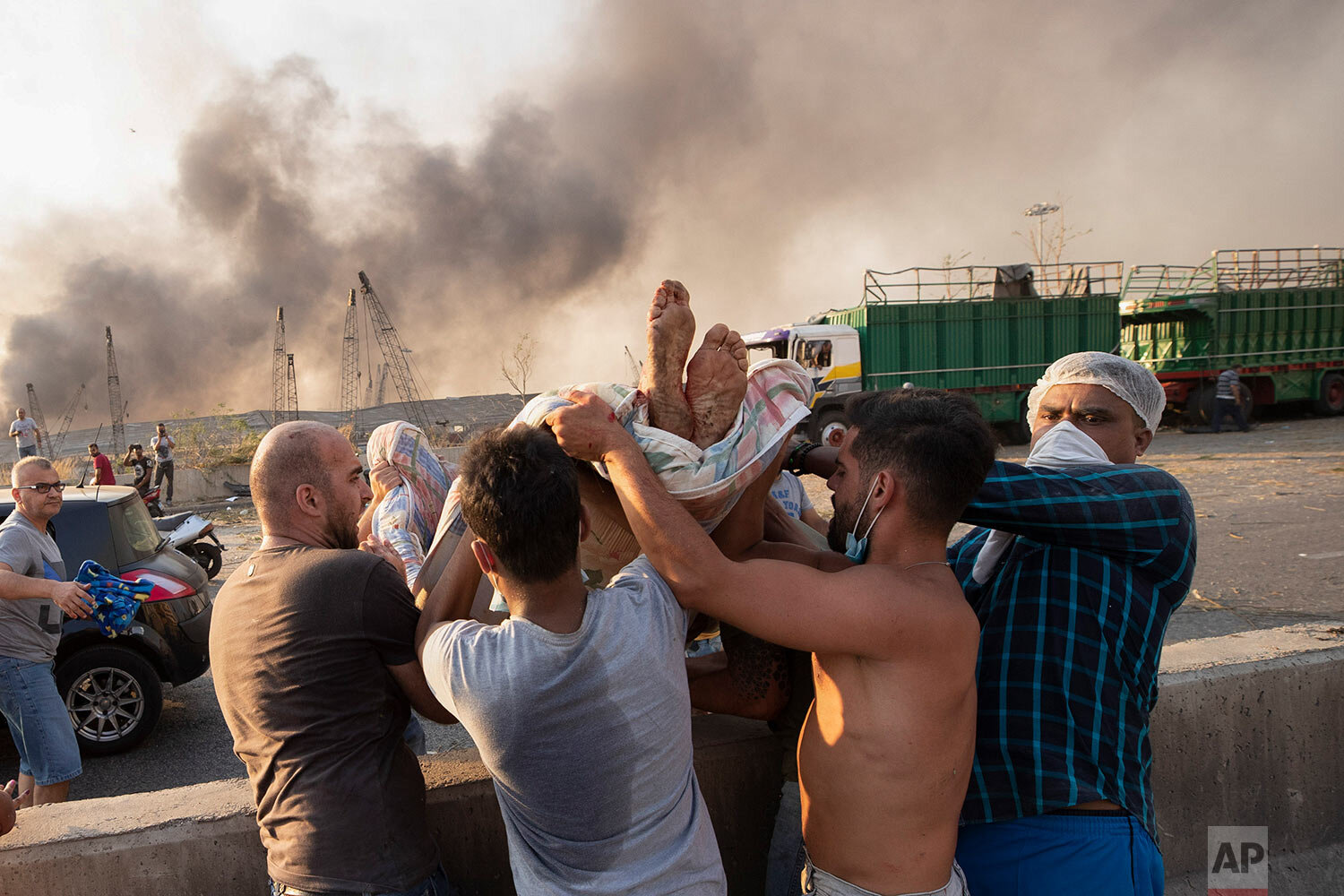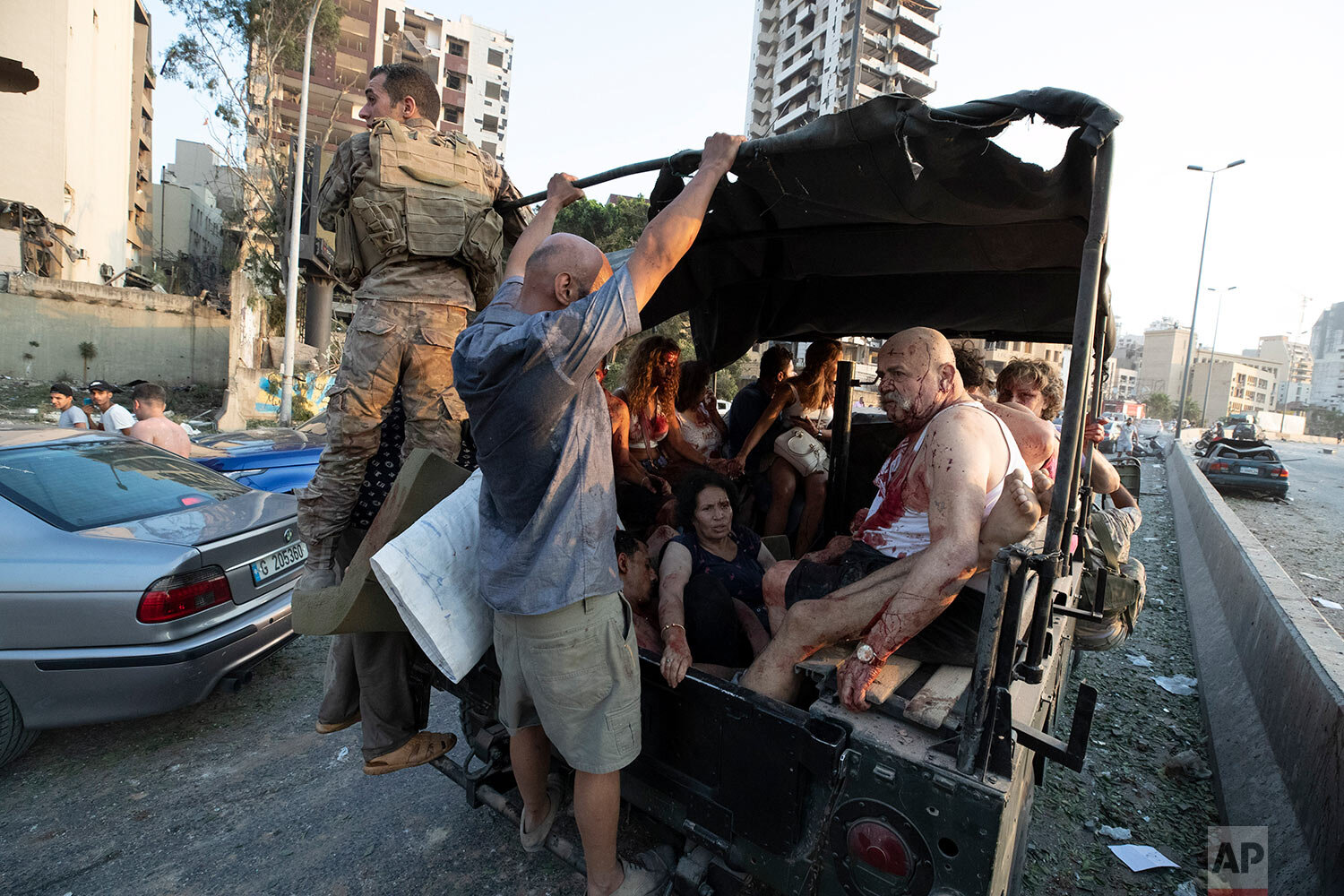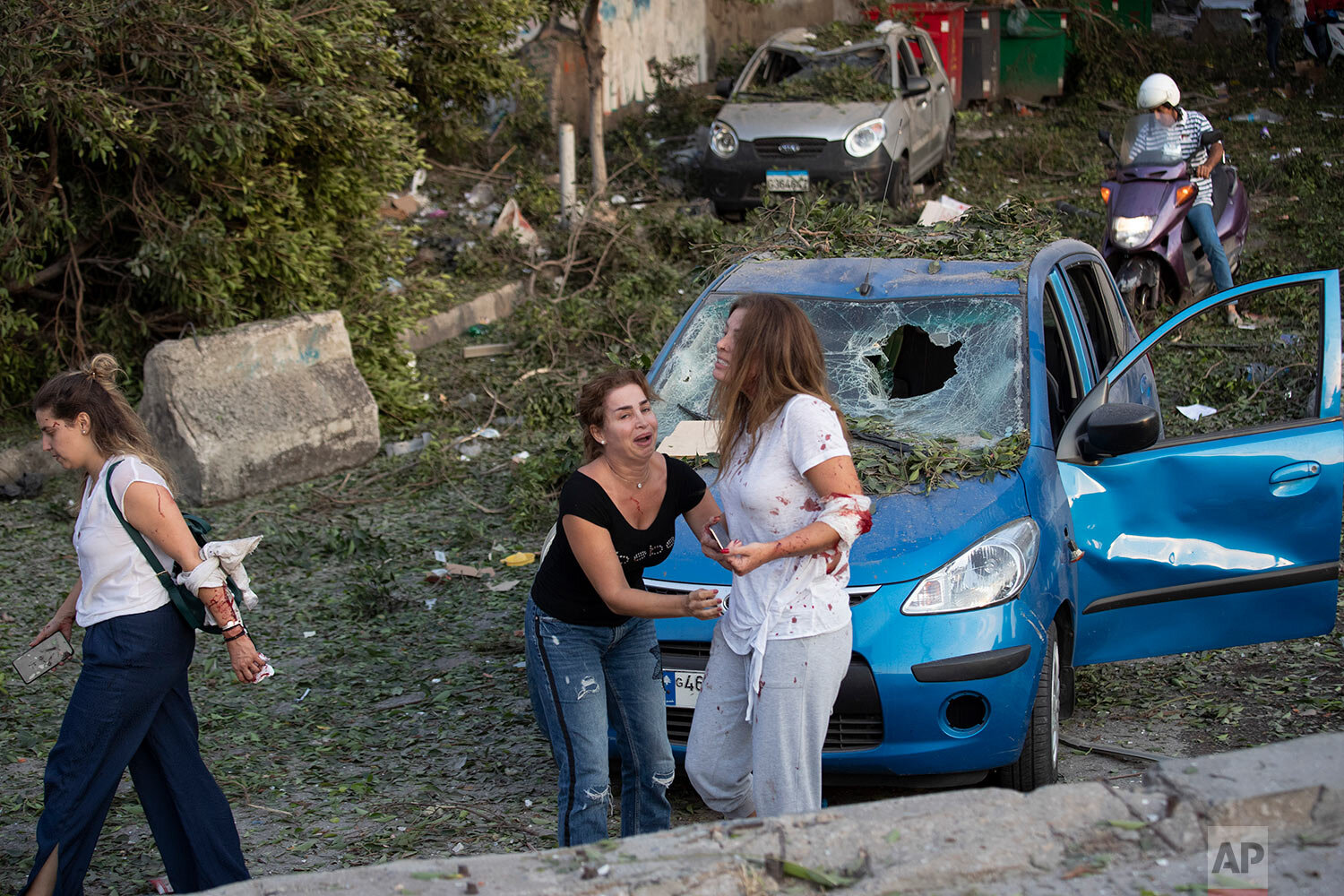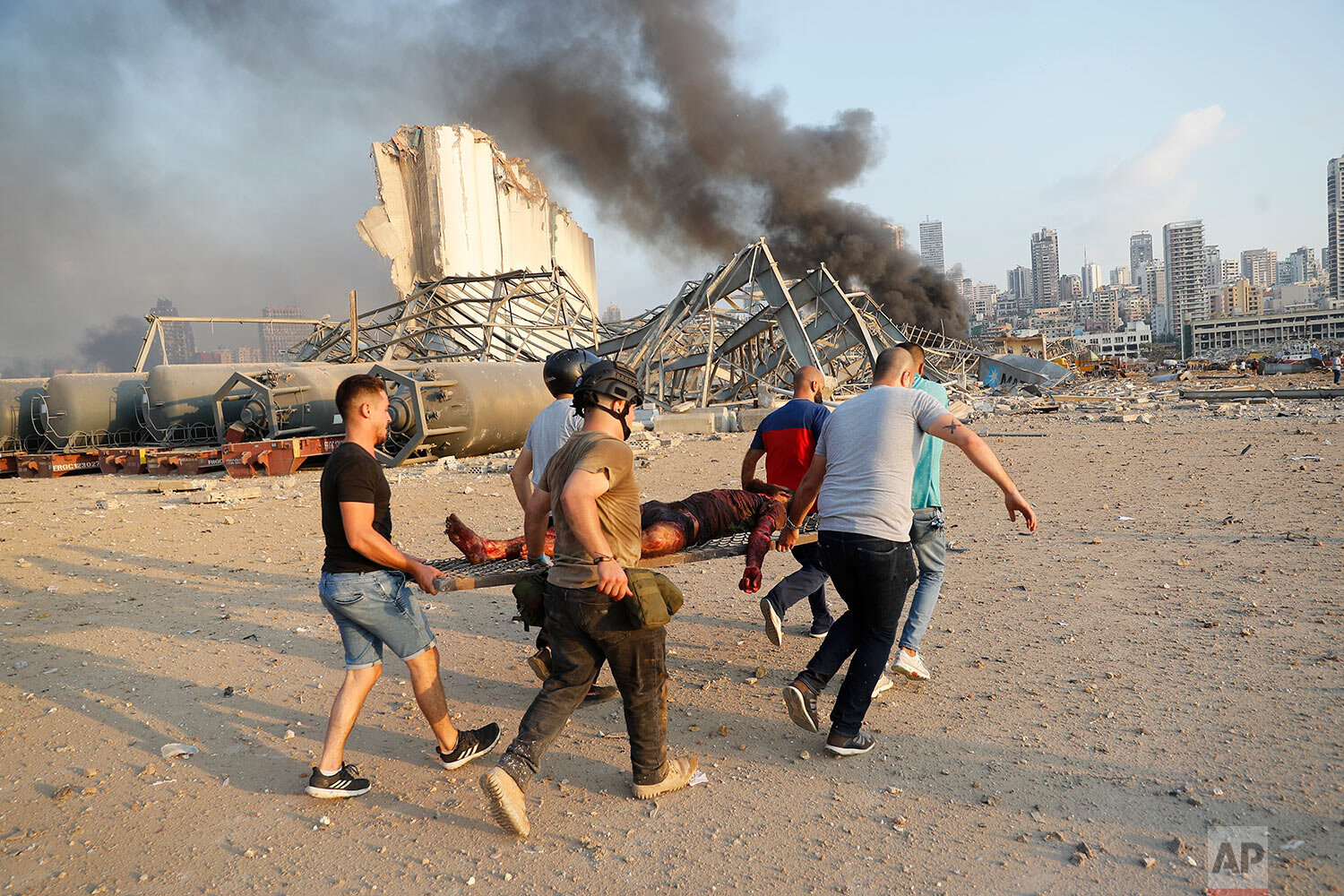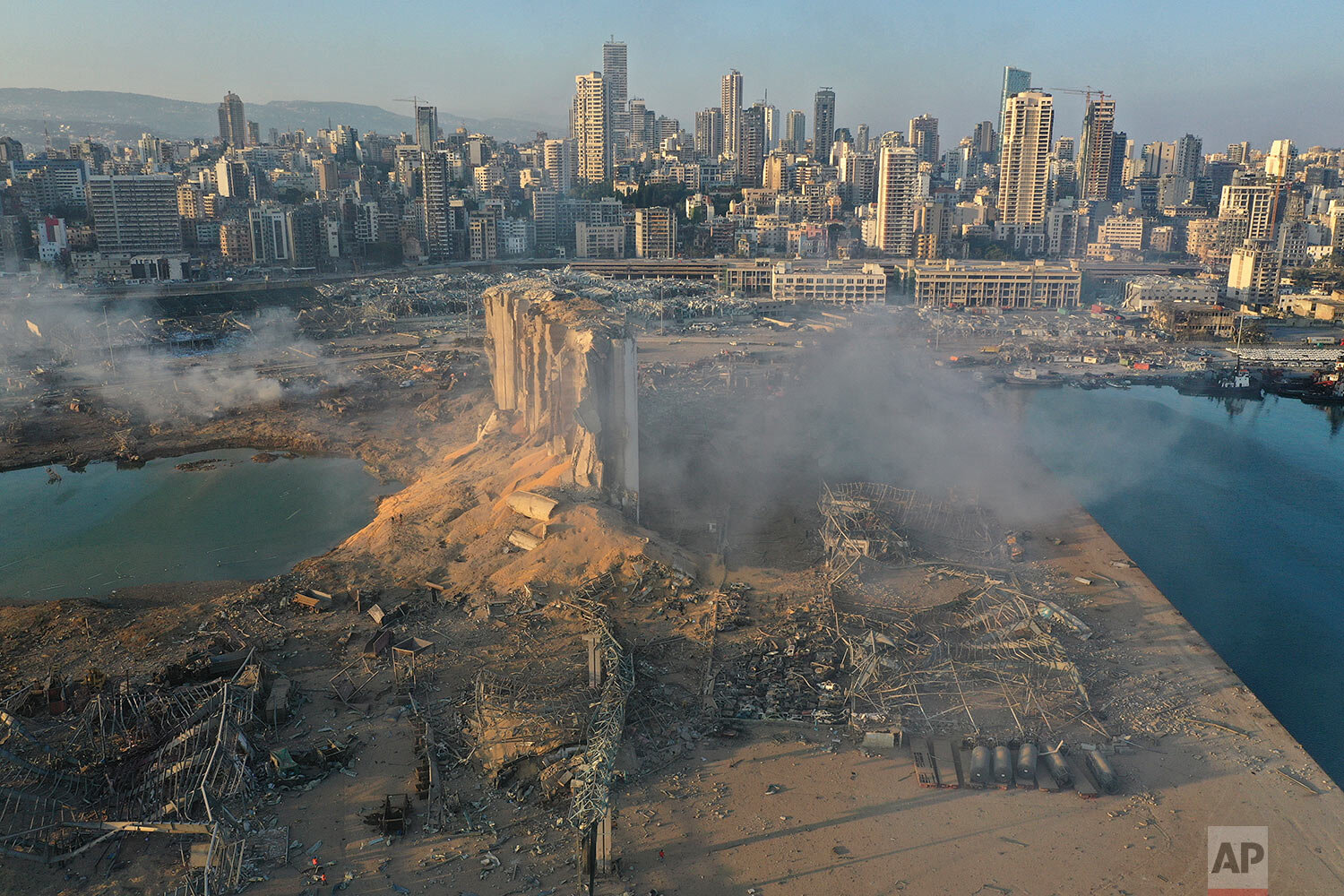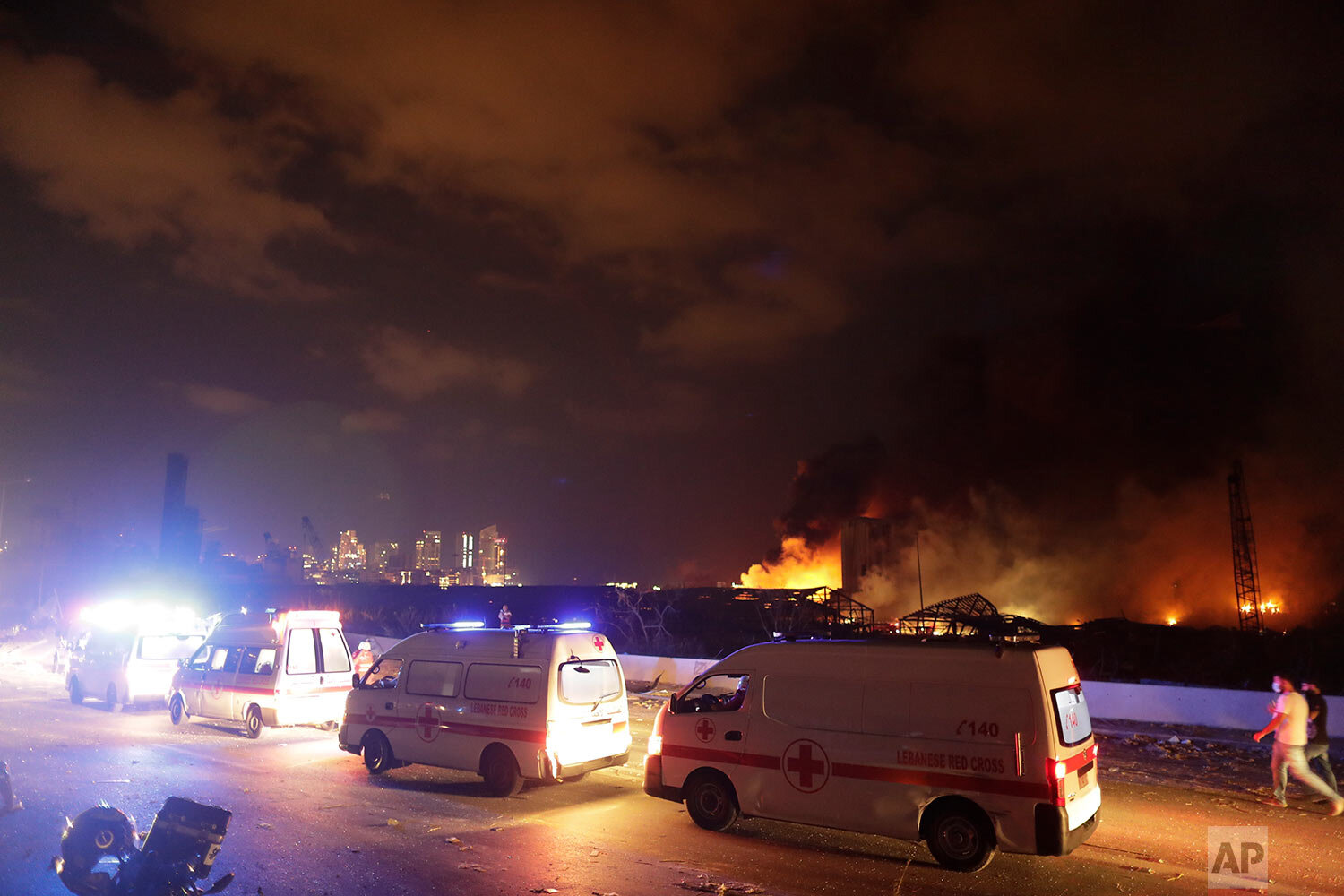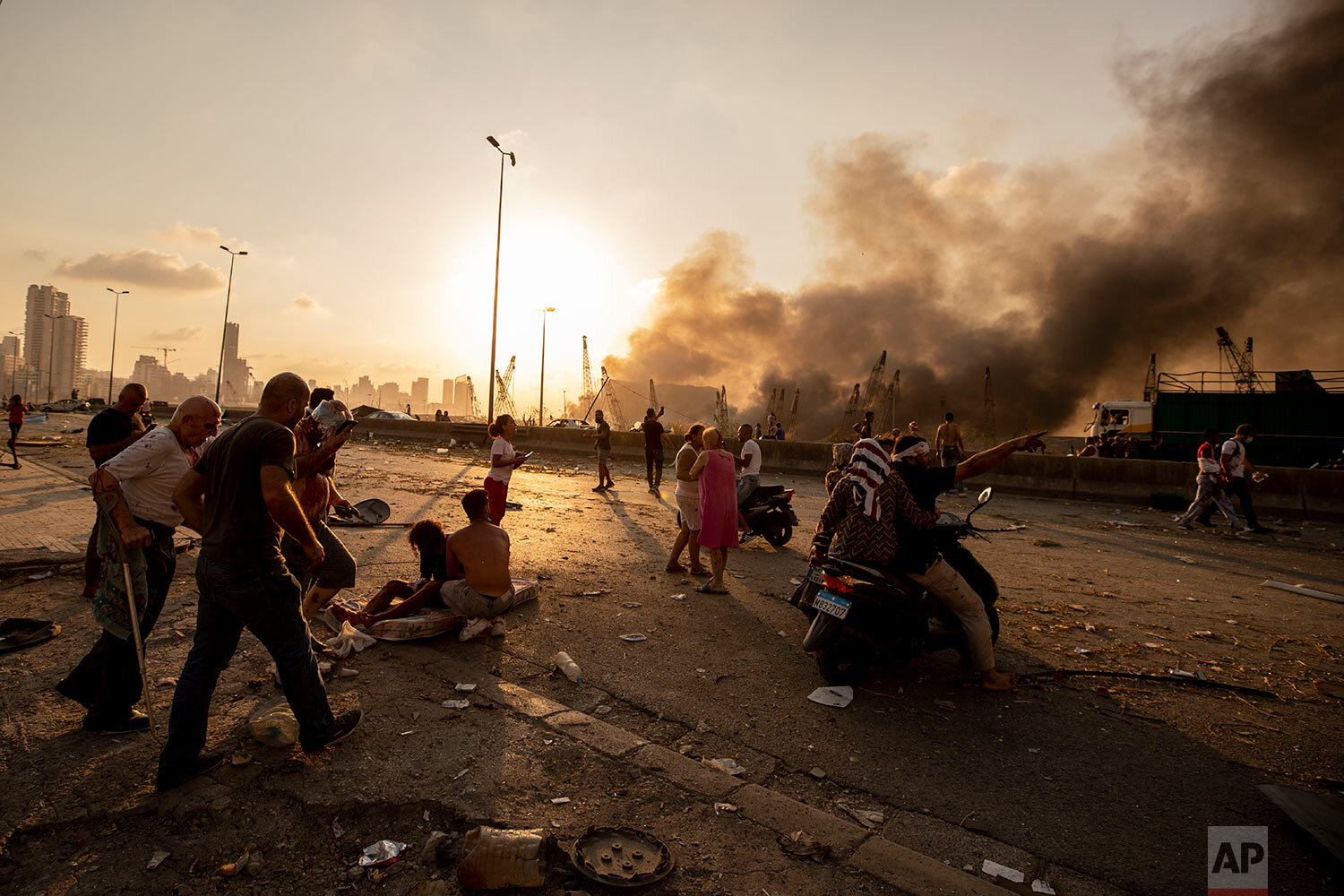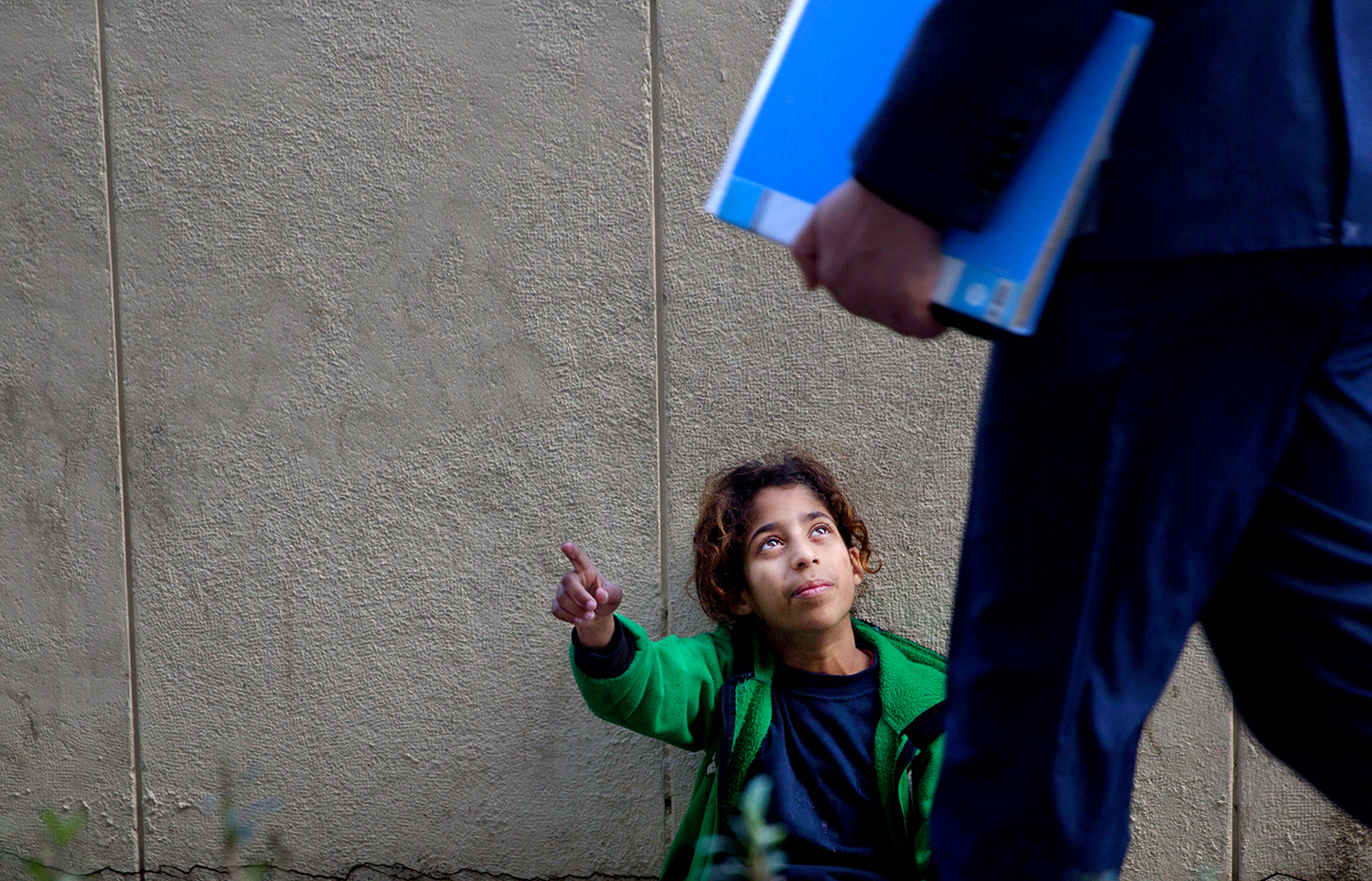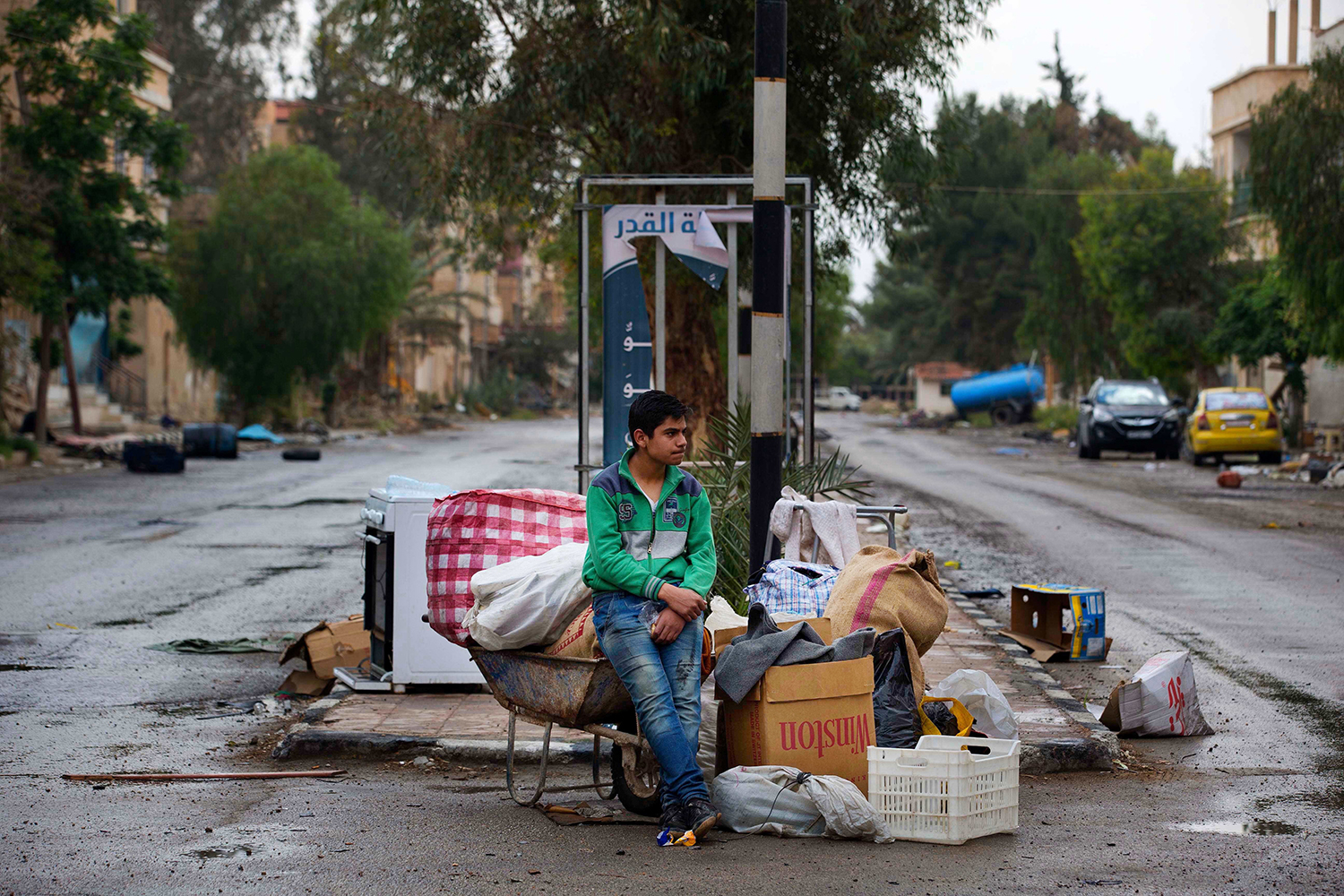Terror, death, devastation in Lebanon explosion

As they watched a huge mushroom cloud rise over the seaport capital, many who felt the massive explosion in Beirut on Tuesday thought it was a nuclear detonation. Others described the popping and bursting of fireworks and a raging fire that spread to another building, triggering the blast felt kilometers (miles) away.
The explosion collapsed balconies, shattered windows and ripped bricks from buildings, killing more than 70 people and injuring more than 3,000.
Civilians help an injured man at the explosion scene that hit the seaport of Beirut, Lebanon, Tuesday, Aug. 4, 2020. (AP Photo/Hussein Malla)
A gallery of photos curated by Associated Press photographers captures the horror, devastation and reach of the explosion: Dazed people covered in blood staggering or standing motionless on streets strewn with glass and mortar; distraught men carrying the limp body of an unconscious, or possibly deceased, woman; a man with a bandage-wrapped head, his face half-hidden by blood; motorcycles and Army vehicles weaving through debris-covered streets to rescue and ferry those hurt to hospitals; small clusters of people carrying stretchers bearing the wounded; thick black smoke billowing from the explosion site.
Interior Minister Mohammed Fahmi told a local TV station that it appeared the blast was caused by the detonation of more than 2,700 tons of ammonium nitrate that had been stored in a warehouse at the dock ever since it was confiscated from a cargo ship in 2014. Witnesses reported seeing an orange cloud like that which appears when toxic nitrogen dioxide gas is released after an explosion involving nitrates.
The explosion also happened amid rising tensions between Israel and the militant Hezbollah group along Lebanon’s southern border. Israel denied any responsibility.
Text from AP News story, AP PHOTOS: Terror, death, devastation in Lebanon explosion.
Photos by Photos Hassan Ammar and Hussein Malla

